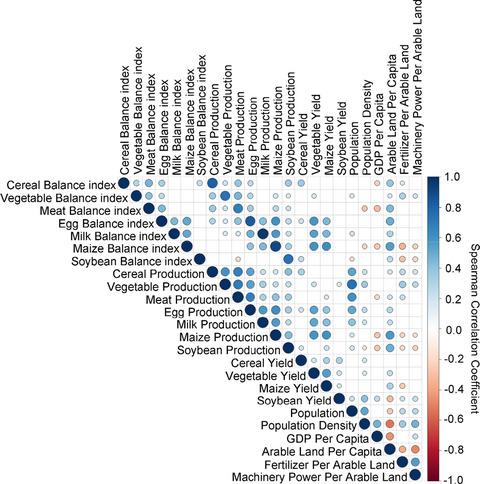当前位置:
X-MOL 学术
›
Food Energy Secur.
›
论文详情
Our official English website, www.x-mol.net, welcomes your
feedback! (Note: you will need to create a separate account there.)
Spatial distribution and driving factors determining local food and feed self-sufficiency in the eastern regions of China
Food and Energy Security ( IF 4.0 ) Pub Date : 2021-05-25 , DOI: 10.1002/fes3.296 Yang Li 1, 2, 3 , Zhigang Sun 1, 3, 4, 5 , Francesco Accatino 2
Food and Energy Security ( IF 4.0 ) Pub Date : 2021-05-25 , DOI: 10.1002/fes3.296 Yang Li 1, 2, 3 , Zhigang Sun 1, 3, 4, 5 , Francesco Accatino 2
Affiliation

|
Achieving food and feed self-sufficiency is important for both China and the world. While China's food self-sufficiency has been examined at the national and provincial levels, few studies consider lower administrative levels or different food and feed items. This study quantifies self-sufficiency in the eastern regions of China and examines correlations with agronomic (arable area, yield, fertilizer input, and machinery power) and socioeconomic (population density, gross domestic product [GDP]) variables at the local level, which are related to the interactions of the Sustainable Development Goals. We calculated food and feed balances, and checked correlations across and within regions grouped by population density levels between production, balance indices, and other agronomic and socioeconomic variables. The results showed that most regions can achieve self-sufficiency in cereals, vegetables, and meat. Regarding eggs and maize, there was self-sufficiency in the north but deficiency in the south. Nearly all regions demonstrated extreme shortages of milk and soybeans. The results also showed a positive correlation between the production of some food commodities and the population in eastern regions of China, demonstrating that the aim of achieving food self-sufficiency at the local level is pursued. For cereals, vegetables, and maize, the yield and arable land per capita were positive factors for self-sufficiency, while GDP per capita was a negative factor for cereals, meat, and maize. Various factors have different impacts on the food and feed self-sufficiency of regions based on population density. Protecting arable land by rural revitalization and mitigating urban sprawl can retain food and feed self-sufficiency in large cities. This study outlines important implications for policymakers seeking to achieve food and feed self-sufficiency in China.
更新日期:2021-05-25











































 京公网安备 11010802027423号
京公网安备 11010802027423号